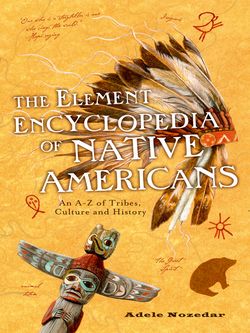Читать книгу The Element Encyclopedia of Native Americans: An A to Z of Tribes, Culture, and History - Adele Nozedar - Страница 47
BIG ELK
Оглавление“What has passed and cannot be prevented should not be grieved for.”
1770–1846
The last pure-blood chief of the Omaha people, Big Elk was known to his own people as Ontopanga. Big Elk lived during rapidly changing times, and steered his people through these changes with wisdom and perspicacity. It was not only the white men who posed a threat to the Omaha, but the Sioux. What was out of the chief ‘s control, however, was the devastation caused by European diseases: smallpox, in particular, had a shocking effect on the population of his people, which was reduced from 3,000 in 1780 to 300 in 1802.
Big Elk supported the United States in the War of 1812, hoping that a victory would mean that the Government would help protect the Omaha against the Sioux.
A progressive leader, there were many facets of the new culture of America that Big Elk thought were good, and he was happy to have two of his daughters marry successful fur traders since he believed that assimilation could work well for both parties, and that such illustrious sons-in-law would give credence to his own family. Since the Omaha tribe followed a matrilinear system, any offspring would be automatically accepted as tribal members.
One of these “good” marriages came with the betrothal of Big Elk’s daughter, named Mitain, to the Governor of the Missouri Territory, Manual Lisa, even though he was at the time still married to a white woman who had been left behind in St. Louis.
Big Elk’s daughter Me um Bane married a wealthy fur trader named Lucien Fontanelle. Their eldest son, Logan, worked as a translator for the U.S. Indian agent from the age of 15. Logan went on to become an important person within the tribe because of his abilities, especially in negotiating land deals, although he was unfortunately killed by the Sioux.
Big Elk believed that, in ceding land to the Government, his people would receive protection in exchange. Accordingly, the tribe gave up most of their land and were relocated onto a reservation in the northeastern part of Nebraska. At this time Big Elk adopted another fur trader, Joseph LaFlesche, not only into the tribe but as his son. In 1842 Big Elk informed Joseph that he would succeed him as chief, and so the young man began to train himself in the traditional ways of the tribe.
Big Elk died in 1846, after a fever. He is buried in Nebraska, at a site known as Elk Hill but also known to the Omaha people as Ong-pa-ton-ga Xiathon, meaning “The Place Where Big Elk Is Buried.”
